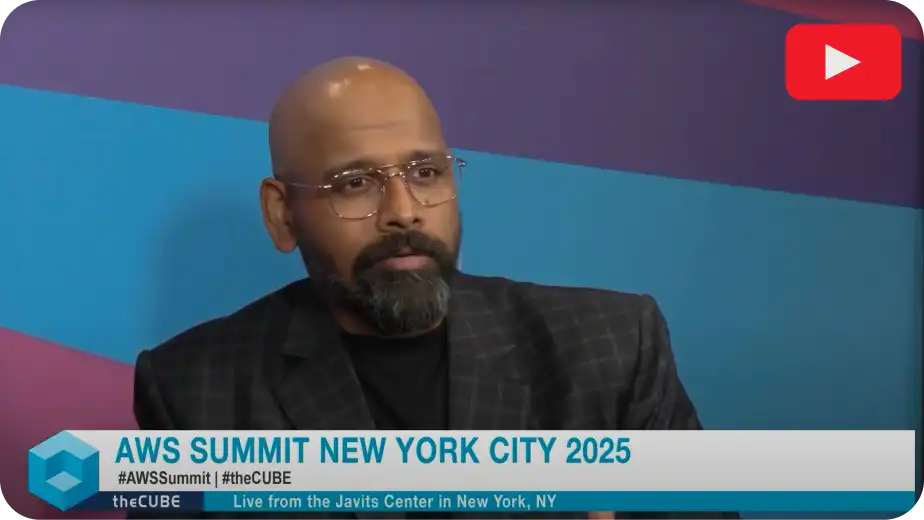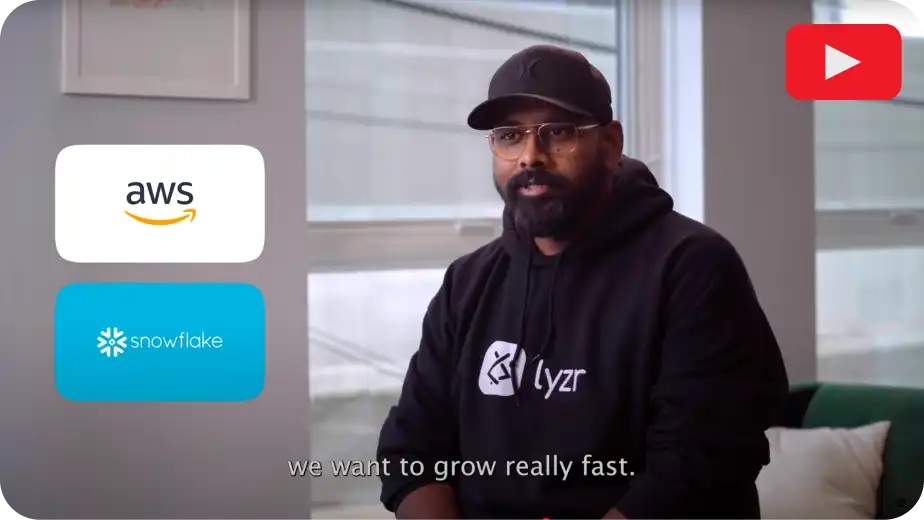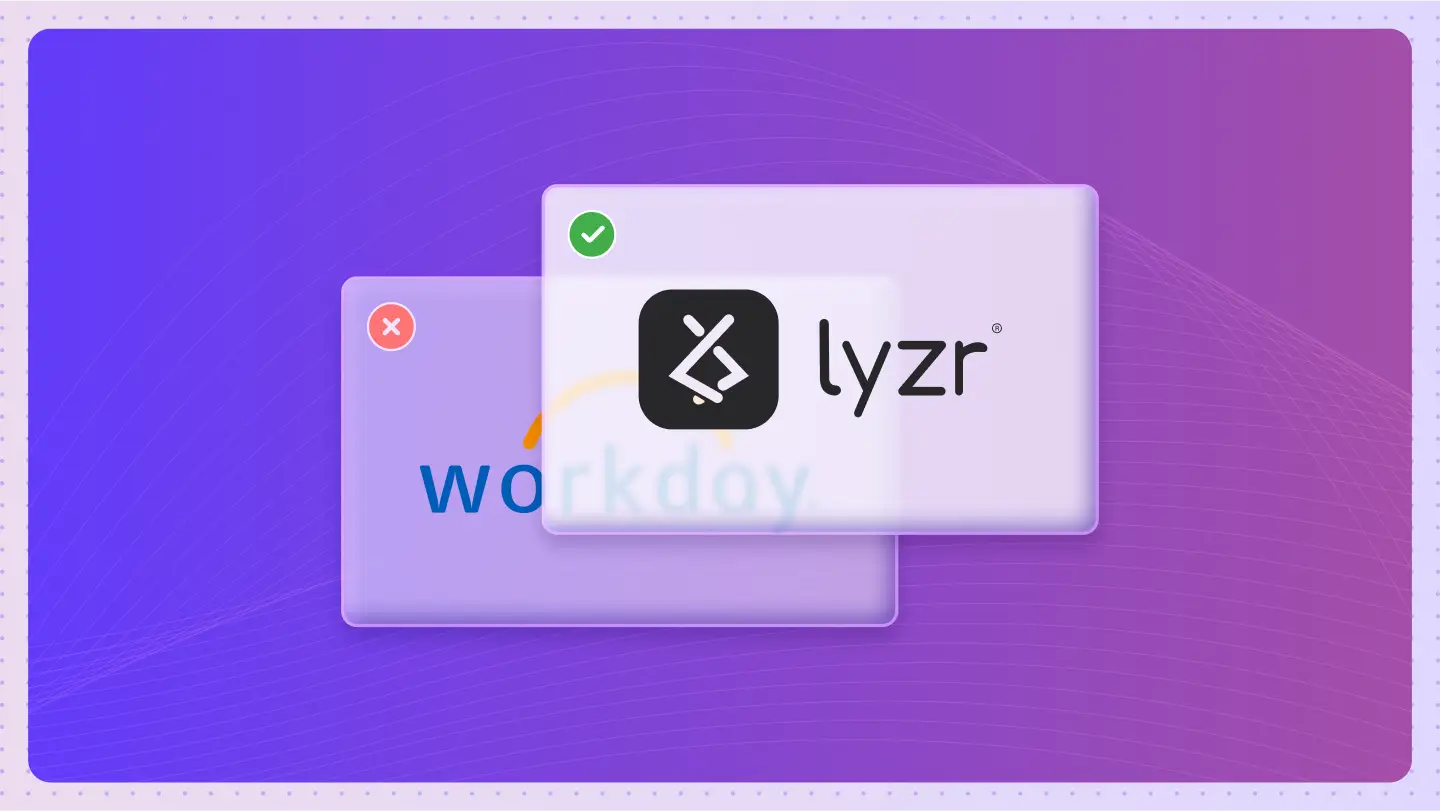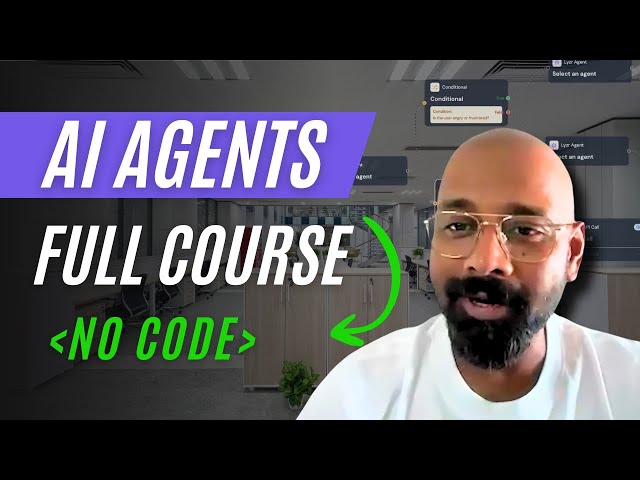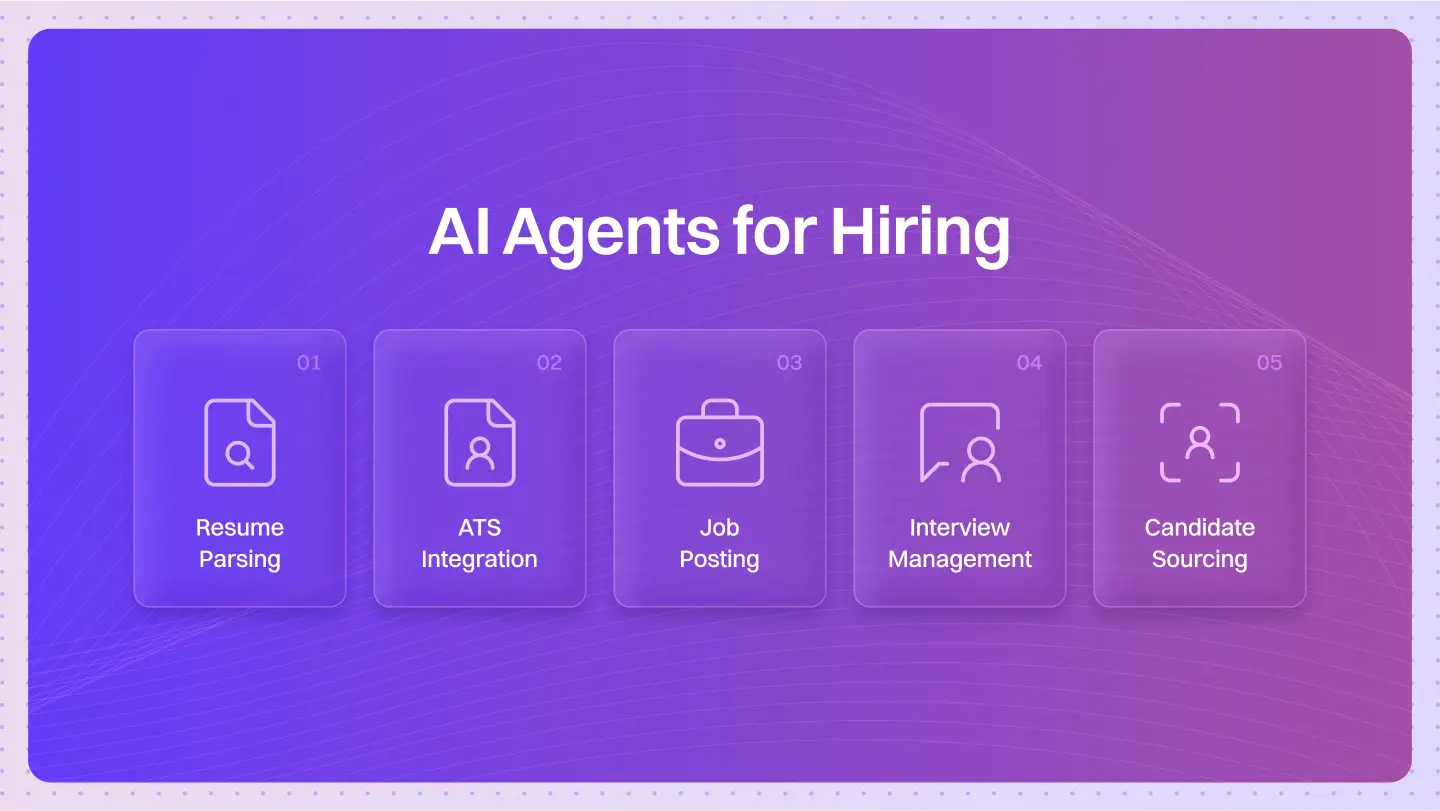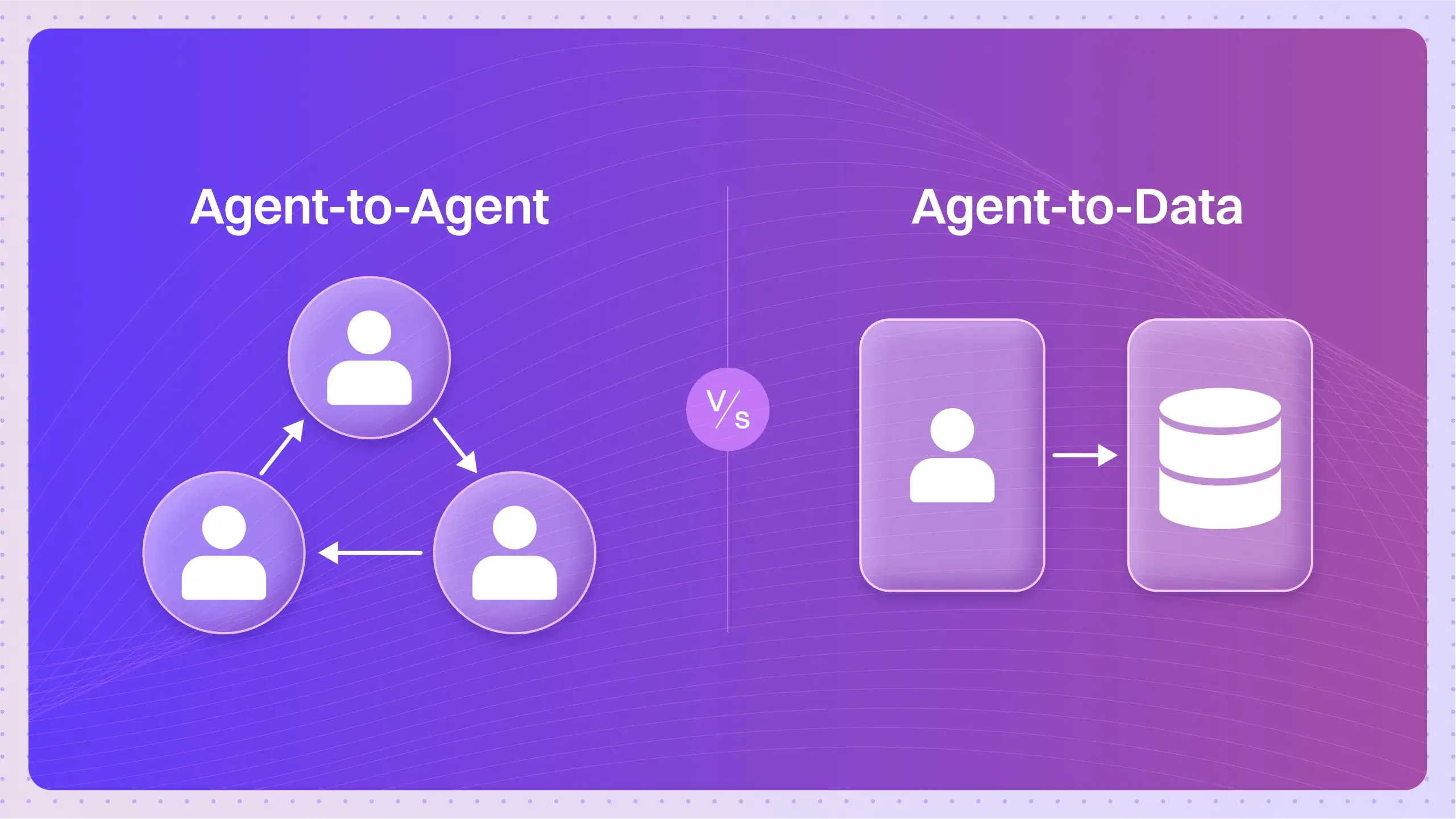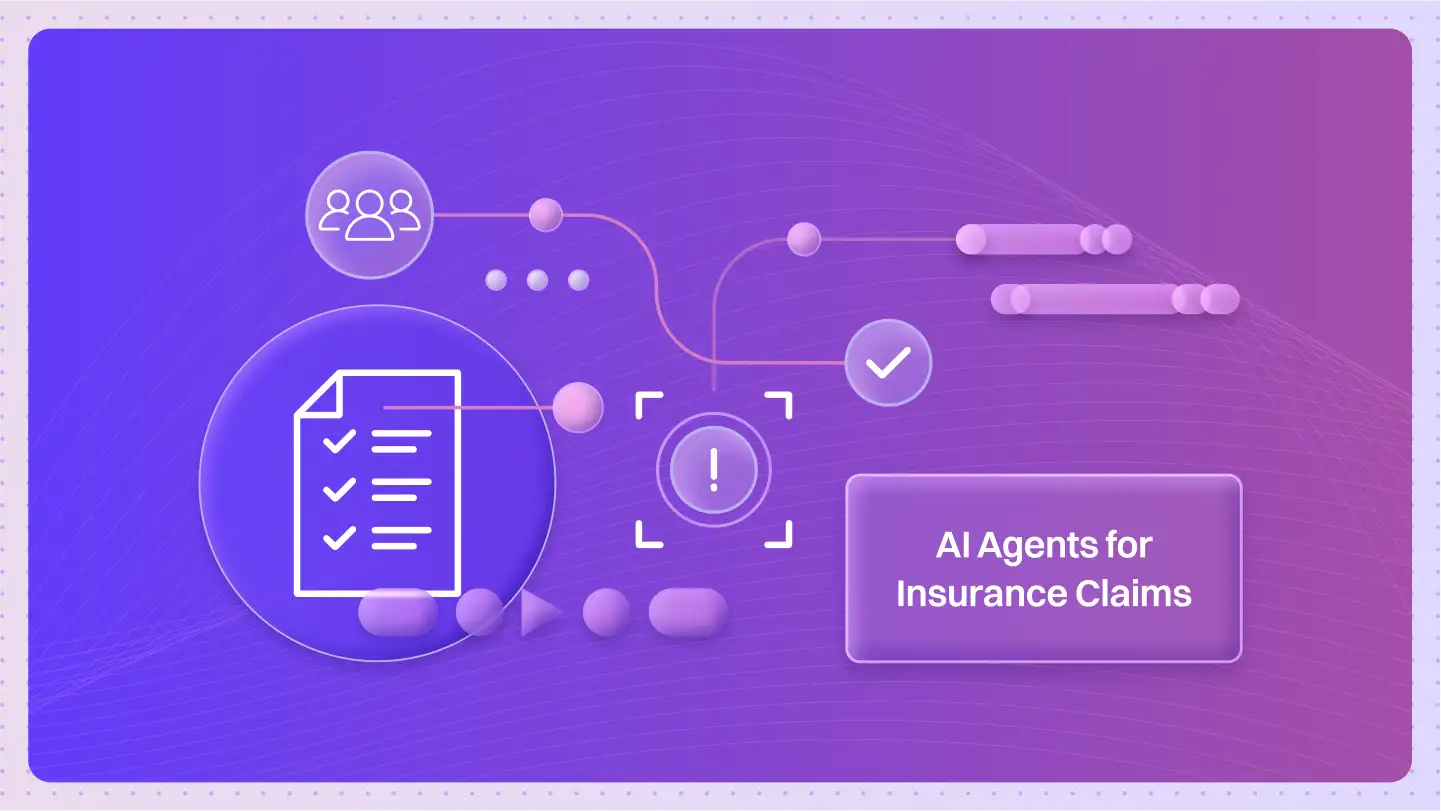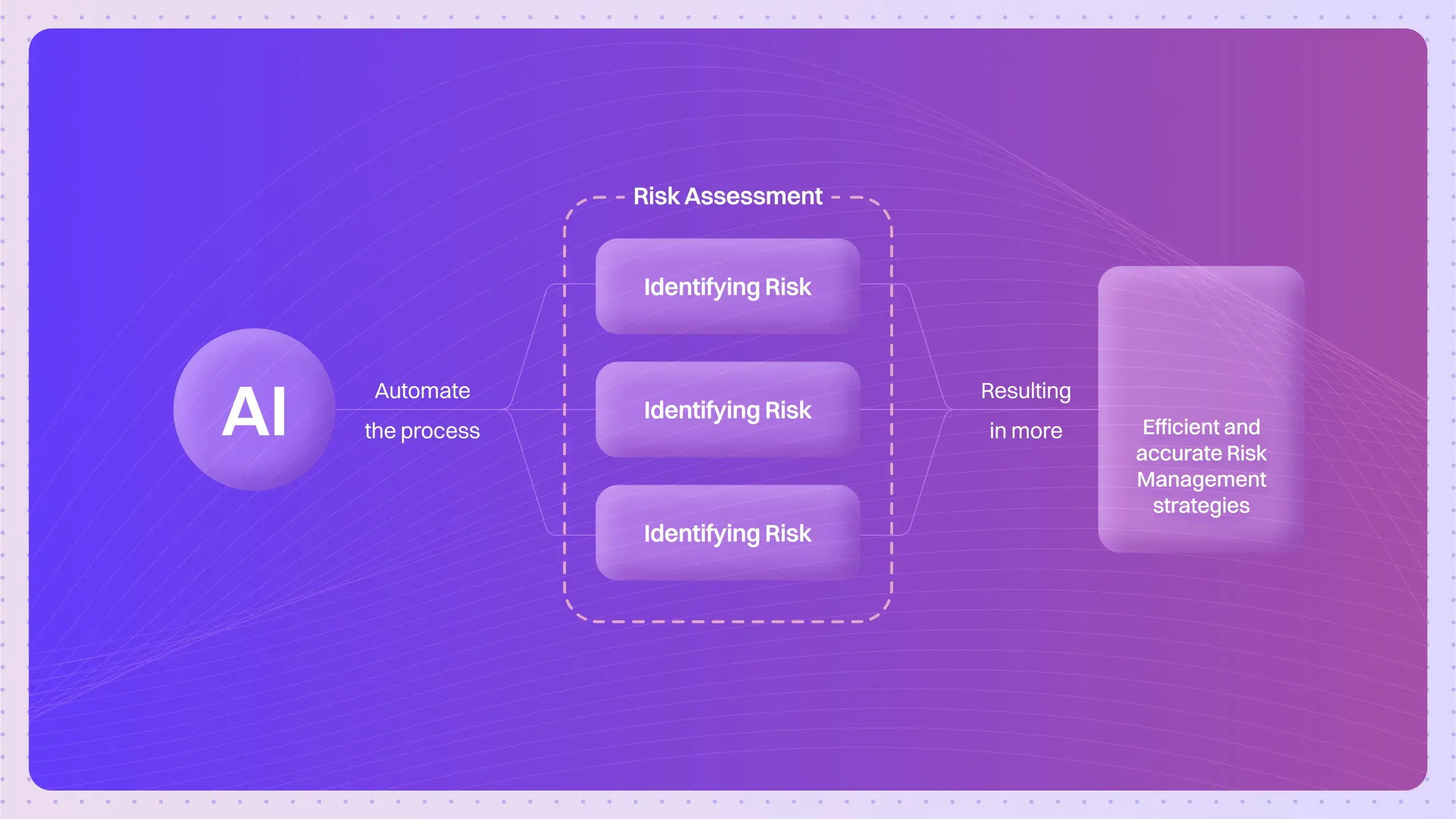Table of Contents
ToggleIt started with a missed resume.
A fast-growing team was in hiring overdrive, open roles, urgent timelines, overflowing inboxes. One recruiter juggled writing job descriptions, screening hundreds of profiles, scheduling interviews, and coordinating feedback, all in a single day.
But one profile slipped through. Buried in a stack of unread resumes, it never made it to the shortlist. The candidate ended up joining a competitor and building something that changed the market.
This wasn’t a one-off. It’s a recurring pattern.
Hiring has structure, but no execution logic. Every step, JD creation, screening, coordination, follows a process. But someone still has to do it manually. Even with an ATS, the pieces don’t move until a person moves them.
That’s where AI agents enter the story, not as a new tool, but as execution-ready building blocks that work behind the scenes.
The recruiter isn’t being replaced. They’re being backed up.
Why Hiring Needs a Rethink??
Hiring is one of the most process-heavy functions in any company. From drafting roles to screening, scheduling, interviewing, and feedback collection, it’s a loop of recurring, predictable steps.
Yet, most of it still runs manually.
Let’s look at the typical hiring process:
| Hiring Stage | Common Tasks | Current Challenges |
| JD Creation | Writing job descriptions | Time-consuming, inconsistent |
| Resume Screening | Filtering based on role fit | Bias-prone, slow with volume |
| Interview Coordination | Finding common availability | Manual back-and-forth, delays |
| Interviewing | Conducting initial rounds | High recruiter dependency |
| Feedback & Decision | Collecting and syncing feedback | Often scattered, slows down closure |
Even with tools like ATS, the execution logic is fragmented. One person still has to pull the strings. Enter AI agents, not tools, but intelligent processes that do the work for you.
Why Hiring Needs a Rethink??
AI hiring agents are task-specific, autonomous systems designed to handle specific stages of recruitment. These are not just AI features or automations, they’re mini recruiters built to think, decide, and act based on context.
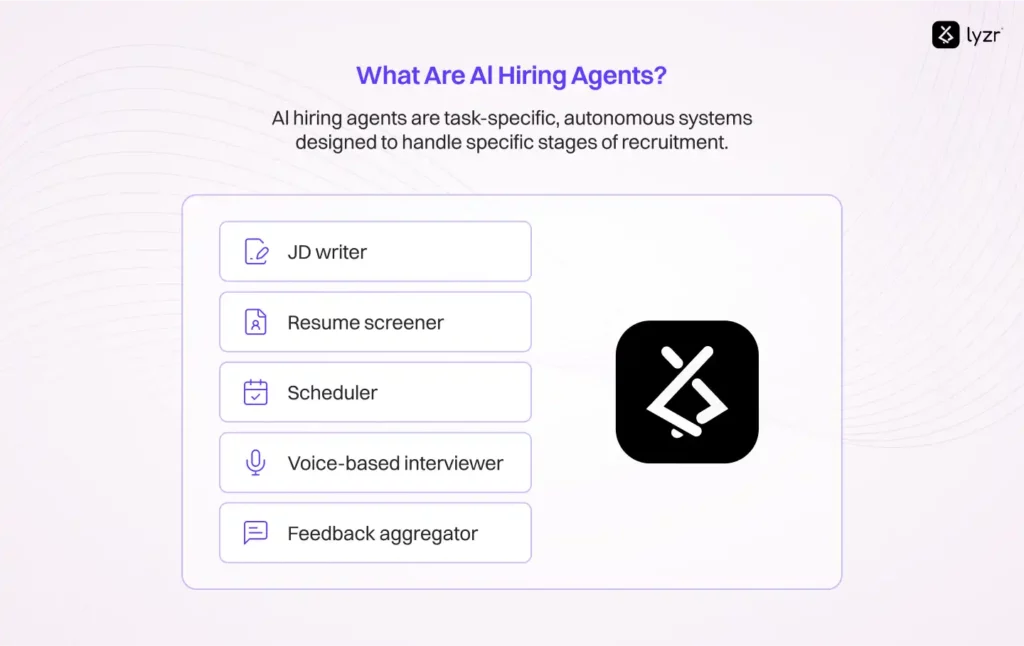
Each agent focuses on one step and does it end-to-end.
Think of them as:
- A JD writer that reads your past role templates
- A resume screener that learns what ‘fit’ means for your team
- A scheduler that handles calendar logistics across time zones
- A voice-based interviewer that collects candidate signals
- A feedback aggregator that nudges interviewers and closes loops
All of them working 24×7, without pause.
How AI Agents Fit Into the Hiring Pipeline
Let’s map the agent logic into the actual recruitment flow:
| Hiring Stage | AI Agent Involved | What It Does |
| Job Description | JD Creation Agent | Drafts role descriptions using internal tone and style |
| Resume Shortlisting | Resume Filter Agent | Screens candidates using trained criteria and prompts |
| Scheduling Interviews | Interview Scheduler Agent | Auto-finds and books common slots |
| First Round Interview | AI Phone Interview Agent | Conducts phone interviews using voice AI |
| Post-Interview | Feedback Collector Agent | Reminds interviewers, syncs data, and helps compare |
Each of these agents can work independently, or together in a modular hiring stack.
Where It Saves Time (And Where It Doesn’t)
Hiring agents don’t replace human recruiters. They replace recruiter bandwidth that’s spent on repeatable tasks. The time savings are real.
| Task | Time Taken Manually | Time With Agent | Human Involvement |
| JD Drafting (per role) | 45-60 mins | 5-10 mins | Final review only |
| Resume Screening (per 100 resumes) | 4-6 hours | 15-20 mins | Escalations only |
| Scheduling (per round) | 30-45 mins | Instant | None |
| Phone Interview (initial) | 30 mins | 30 mins (async) | Optional review |
| Feedback Follow-ups | 1-2 days | Automated | None |
By freeing up 70–80% of operational bandwidth, recruiters can focus on what matters: candidate experience, stakeholder alignment, and closing.
Built-In Intelligence: How These Agents Learn
Unlike simple rule-based bots, hiring agents adapt based on behavior and feedback.
Examples:
The Resume Agent learns what ‘good candidate’ means from past shortlists and hiring outcomes.
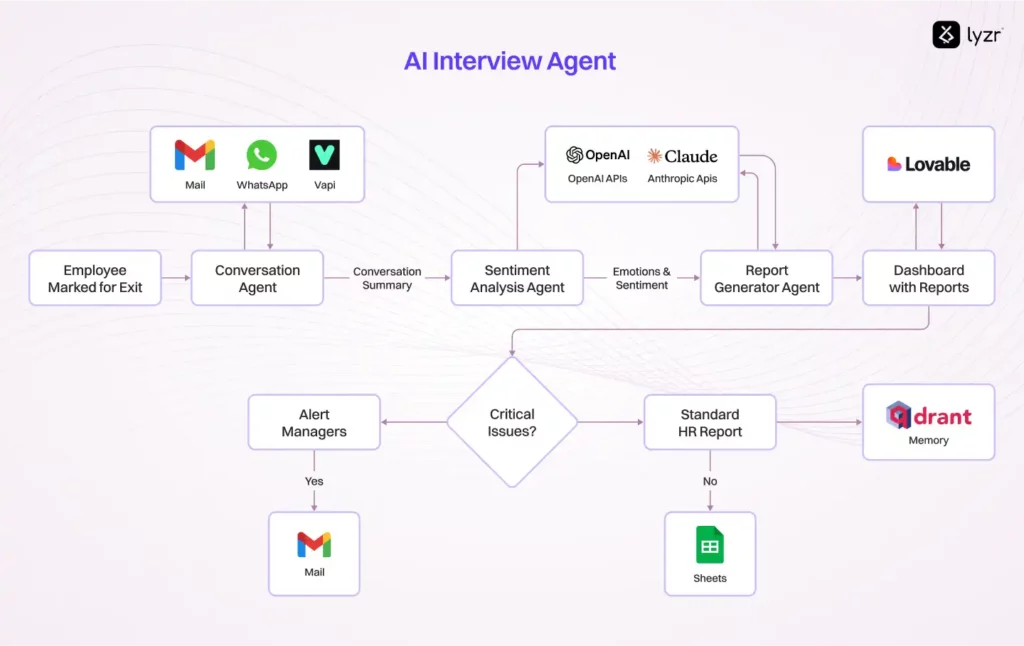
The Interview Agent adjusts tone and question order based on candidate responses.
The JD Agent rephrases content based on what your previous hires responded to.
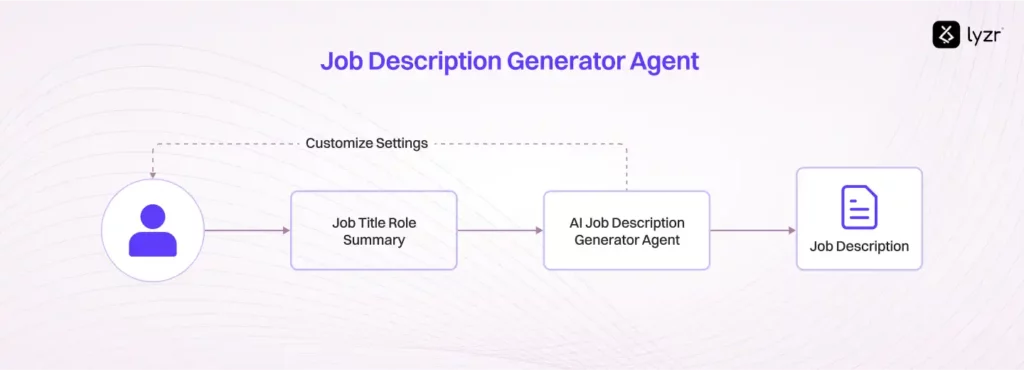
This isn’t static automation, it’s contextual execution.
Real-Life Example: Scaling Tech Hiring with AI Agents
Scenario: A 200-member tech firm hiring 25 engineers in 3 months.
Without agents:
- 3 recruiters
- 12-hour days
- 2 weeks to close 1 role
With agents:
- JD, screening, and scheduling handled by agents
- Recruiters only involved in final interview rounds
- Roles closed in 4–5 days on average
Result: The team ran parallel hiring tracks with minimal overlap. Candidates got responses within 24 hours. Recruiter burnout dropped.
Building Your First Hiring Agent Stack
Lyzr Agent Studio makes building secure, reliable AI agents seamless, integrate them into your workflows, automate tasks, and customize them to fit your business goals.
1: Define Your Agent: Give your agent a name and purpose. Choose your preferred LLM provider and model, then outline the instructions or idea to get started.
- Set the Direction: Shape the output. Define what you expect from your agent, ensuring responses are accurate and in the format you need
- Seamless integrations: Run your agent, ask questions, and evaluate its responses. Refine the prompts as needed for perfection.
- Rapid Development and Testing: Launch your agent as an app on Lyzr’s app store and let others discover, access, and benefit from your creation.
Ready to get started? Try out our platform now
The Road Ahead: Recruiters + AI Agents
AI agents don’t replace recruiters. They amplify them.
With agents:
- Recruiters become orchestrators, not operators
- Feedback cycles shrink
- Candidate drop-offs reduce
- Hiring gets faster and fairer
FAQs: AI Agents for Hiring
1. Do AI hiring agents replace recruiters?
No. AI agents handle repeatable tasks like screening, scheduling, and JD drafting. Recruiters still lead interviews, drive decision-making, and create candidate experiences. Agents free up time, not roles.
2. How accurate are resume screening agents?
Screening agents improve with context. When trained on past hiring data, team preferences, and role criteria, they can surface high-fit candidates faster. Accuracy increases with feedback loops and prompt tuning.
3. Can these agents integrate with existing tools like ATS or calendars?
Yes. Most AI hiring agents can connect with Slack, Gmail, Google Calendar, and popular ATS platforms using APIs or native integrations. They work alongside, not outside, your current systems.
4. What if a candidate needs a human touch during the process?
AI agents aren’t meant to replace human interaction. For sensitive moments like interviews or offer discussions, the recruiter steps in. Agents simply ensure candidates don’t get delayed or forgotten.
5. How do I get started with AI hiring agents?
Start small. Lyzr offers pre-built AI agents for tasks like resume filtering, JD creation, and interview scheduling, ready to plug into your hiring process. Explore them, or build your own with Lyzr Agent Studio.
Have a unique workflow? Book a demo and let’s build it together.
Book A Demo: Click Here
Join our Slack: Click Here
Link to our GitHub: Click Here

